The Seagate ST3283A. A design demonstrating striking sophistication, while clearly reeking of high quality, something I wish modern Seagate drives kept up with. These drives use a solenoid to unlock the head stack, which is why you hear a loud thunk when the drive spins up.
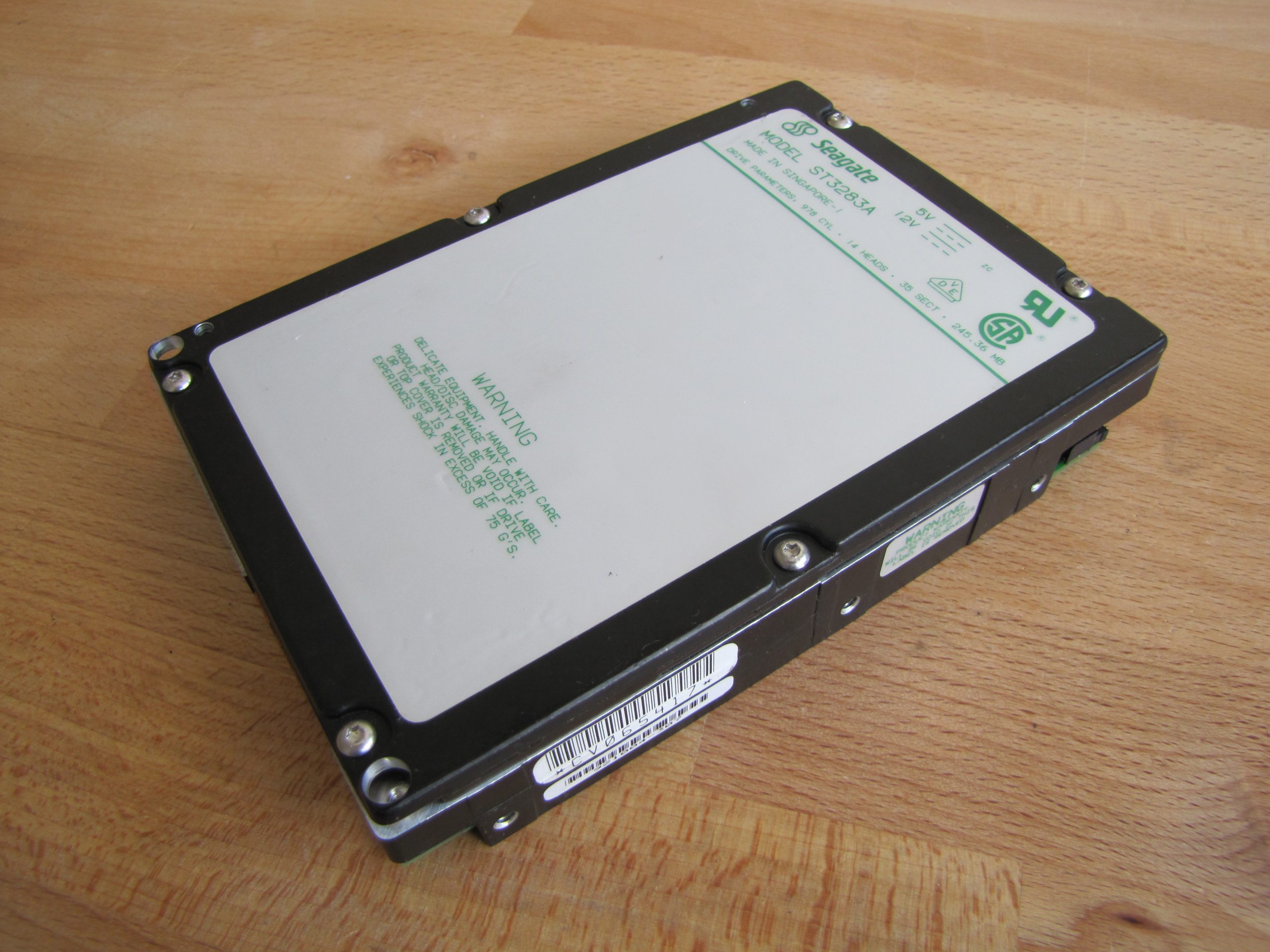
Drive Attributes
-------------------------------------
Seagate ST3283A
-------------------------------------
Capacity 245MB
Mfc Date 1993 (week 39)
Interface PATA
Platters 3
Heads 5
RPM 4500
CHS 1024/5/63 (native)
978/14/35 (translated)
-------------------------------------
These drives have somewhat of an enterprise-grade background design. Seagate released two versions of the ST3283, with different suffix lettering to indicate the interface used. In this drive’s case, the ST3283A uses the standard IDE interface of the time, whereas the ST3283N uses SCSI-2 (50-pin).
Utilising black casings on drives was very common in this era, signifying a no cost-cutting nature. There’s no technical reason to do this, but stylistically it is quite an admirable design choice.

The front side of this drive is incredibly plain. The sticker provides very little information, unfortunately. Seagate manufactured these drives between 1993 and 1994. Based on the date code provided, this drive was manufactured in 1993. We’ll dive into the date code a little later on in this post.
This drive was manufactured in Singapore, when the country was booming in the technological industry. Singapore was renowned for making very high quality drives for almost every hard drive manufacturer at the time, but unfortunately due to modern cost-cutting measures, this is a rare sight to see on drives in this day and age.
Aside from the drive parameters, capacity and some legal spiel, the label holds no other useful information.

The PCB itself is quite barren looking. Mostly due to the fact that Seagate had flipped this one in order to reduce the chance of physical or ESD damage. Many manufacturers took a very long time to do this, if at all, so seeing Seagate do this in such an early drive demonstrates the foresight at hand. This decision, of course, requires careful consideration when dealing with IC heat generation.
An LED is present on this board, which indicates drive activity. On this particular drive, it’s just to the right of the J8 header. This was quite common in SCSI drives of the early 90’s, alongside being the norm on most Quantum drives. Other manufacturers did this on select models too, but never particularly consistently. It would make sense to have a built-in LED on this drive, seeing as the corresponding SCSI-version ST3283N has an almost identical PCB layout. A header is also present for an external LED, which was a much more common choice made by most manufacturers in the early to mid 90’s.
We can also see the date code stamped onto the PCB. In this case, it reads 9339, which means this drive was made in the 39th week of 1993. The formatting of early Seagate date codes corresponds to YYWW.
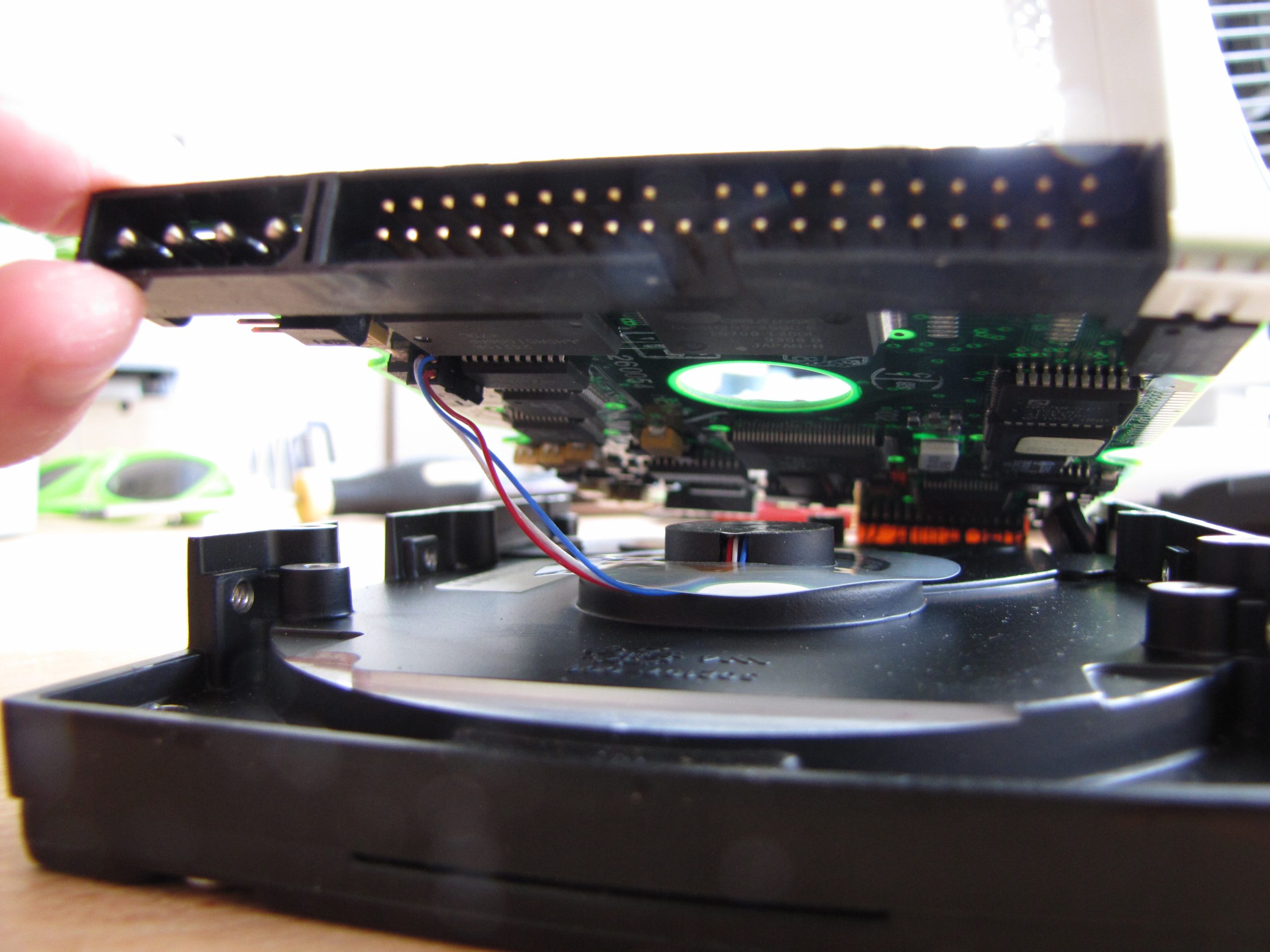
Having a closer look at the PCB on this drive isn’t the easiest task. The spindle motor connector is in a rather precarious position. Not to mention the guage of the wiring is insanely thin, which makes the entire process a little nerve-wracking. After disconnecting this header however, the PCB can be lifted towards the backside of the drive, in the direction of the J8 header. What can barely be seen on the picture above, is the flex ribbon cable connecting the drive to the PCB.

Now we can see a more familiar looking PCB, comparatively to most drives from the early 90’s. Fortunately, there’s no dodgy capacitors to be seen. This drive’s PCB demonstrates the huge amount of IC manufacturers from the time, notably STMicroelectronics, Mitsubishi, Cirrus Logic and even custom chips developed by Seagate themselves (although not manufactured internally). We can see the custom Seagate-designed IC used for this drive, labelled 102024-512 right above the hole for the spindle motor. Clearly, based on the text imprint, this was developed in tandem with AT&T Technologies.

The underside of this drive is much like the rest of the drive, fairly understated. More warranty labels ensue, but aside from this it’s pretty plain. Unfortunately no motor manufacturer seems to be present on this side of the drive, so it’s unknown who the actual maker of this would be. Most likely Nidec, if I were to guess.
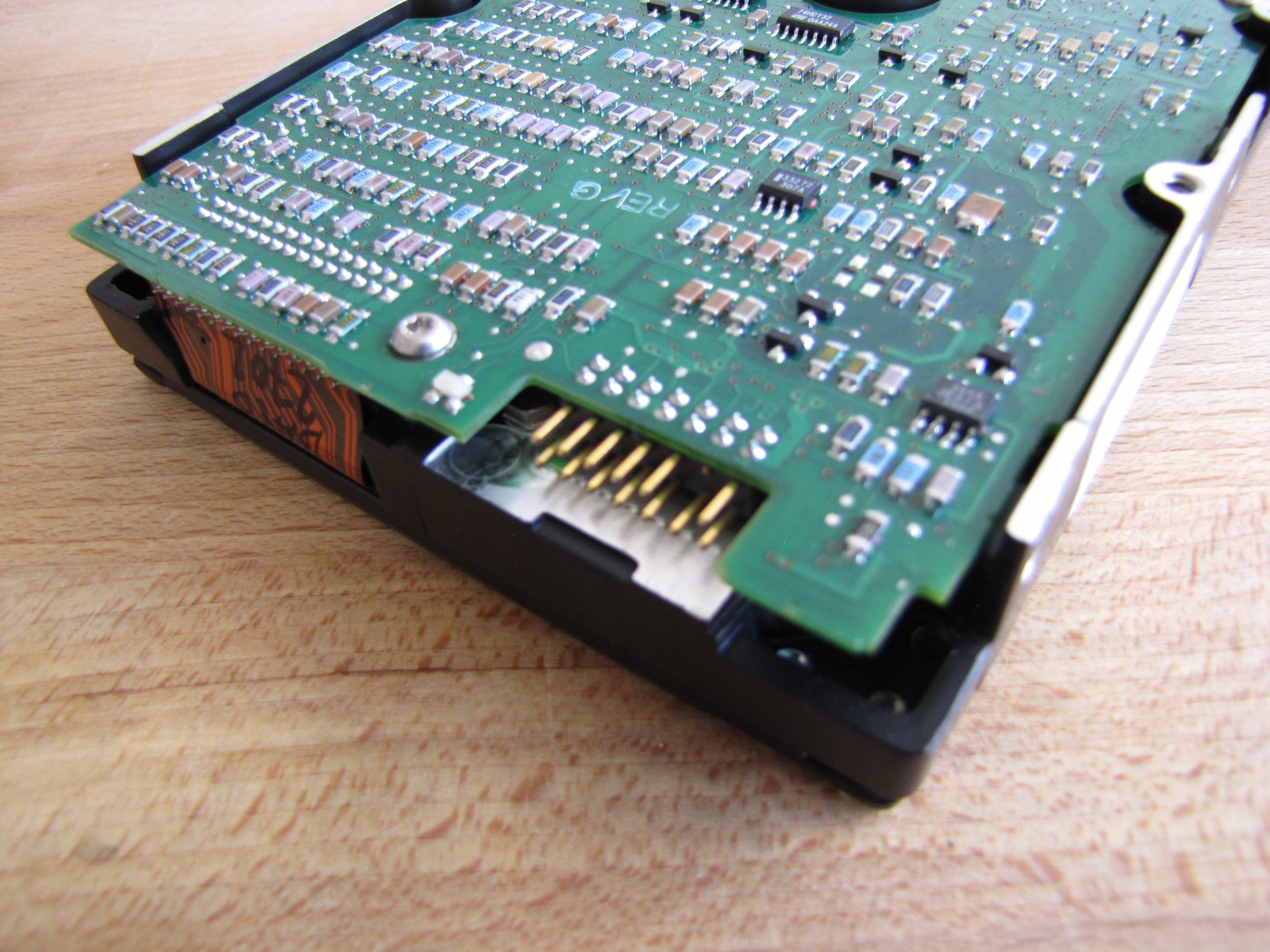
13 11 9 7 5 3 1
+---------------------+
| o o o o o o o |
| o o o o o o o |
+---------------------+
14 12 10 8 6 4 2
Pin Function ------------------------------------- 3 Removed for Key 9 Clock Ground 10 External Spindle Clock Sync. 13 Remote LED- 14 Remote LED+ -------------------------------------
Curiously, when analysing the additional options jumper block (labelled as J8), a rather unusual feature of this drive becomes apparent. It has the ability to synchronise its spindle motor alongside an array of drives. For myself, it’s certainly the only time I’ve seen a drive advertise this directly.
It’s important to note that no other pins have been labelled, as these were designated for internal factory use only.
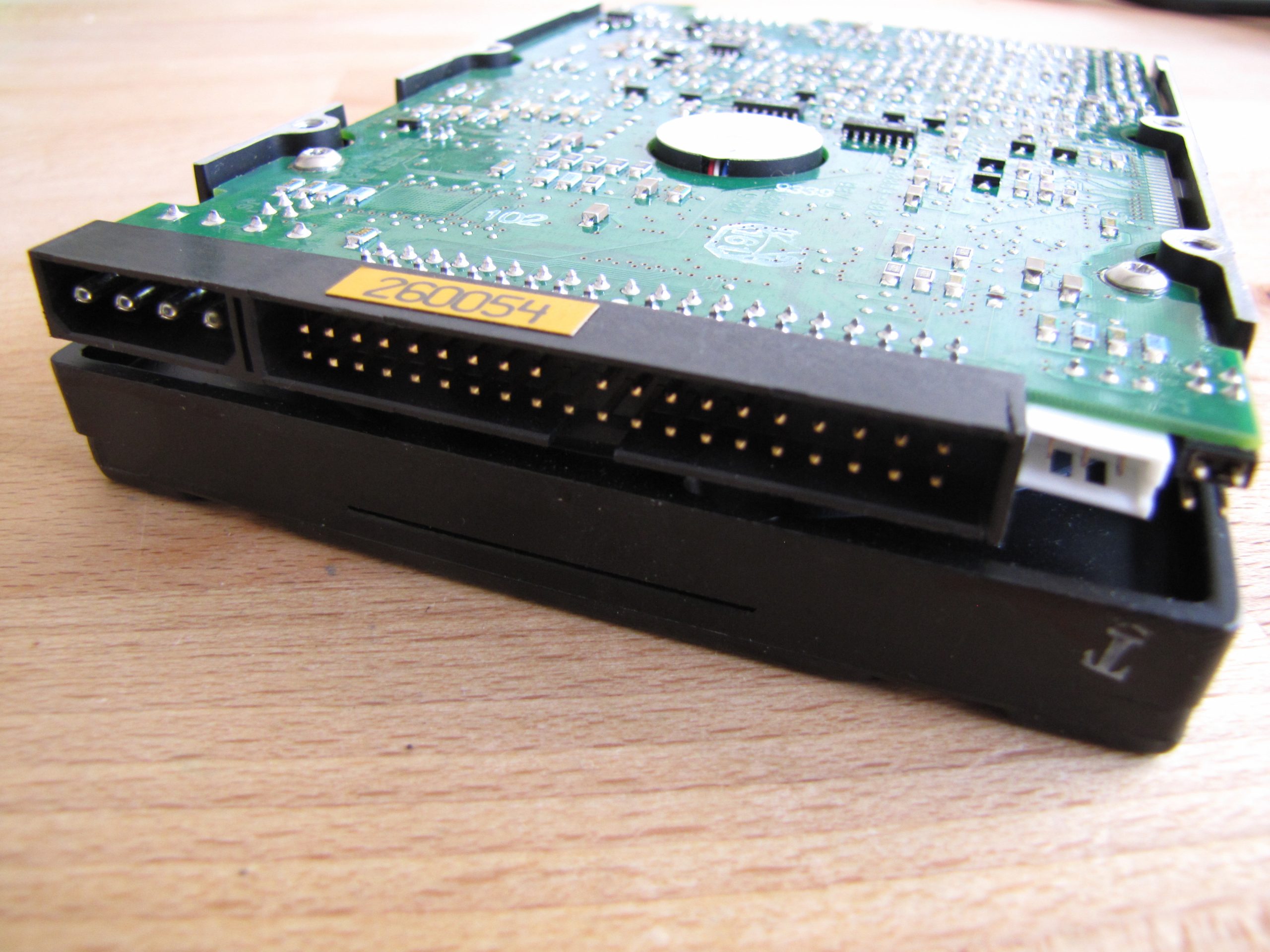
-------------------------------------------------------------- +3--1+ One Drive Only +3--1+ Drive +3--1+ Drive is |o o| (Default) |o X| is Slave |X o| Master with |o o| |o X| |X o| Slave Present +4--2+ +4--2+ +4--2+ --------------------------------------------------------------
The jumper settings on this drive are quite simple, fortunately. Like most drives of the time, jumper settings aren’t commonly placed on the label itself.
Fortunately, this is no where near as annoying as any of the early 90’s Conner Peripherals drives, which have quite an infuriating jumper setup.
Lastly, this drive features both most commonly used power connection forms from the time period. These being standard molex, alongside a mini power connector.
------------------------
+-------+
| o o o |
+-+-+-+-+
| | +---- + 5 VDC
| +------ +12 VDC
+-------- +GND
+------------+
| 1 2 3 4 |
+-+--+--+--+-+
| | | +----- + 5 VDC
| | +-------- + 5 Volts Return
| +----------- +12 Volts Return
+-------------- +12 VDC
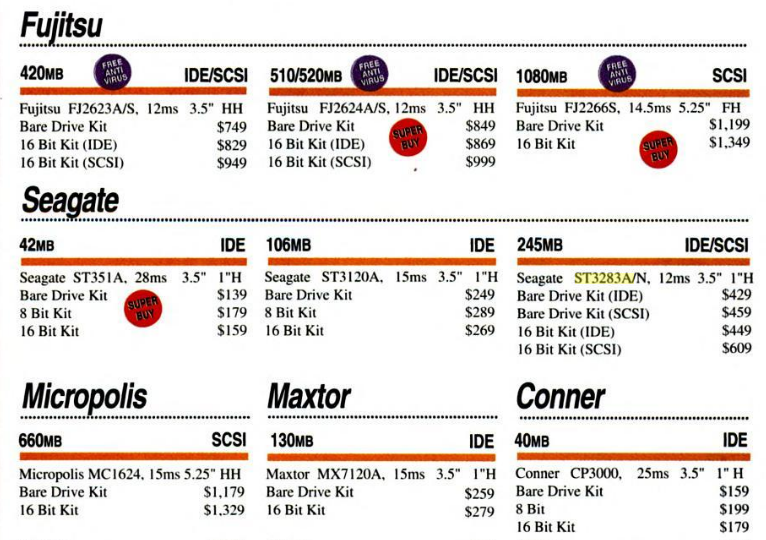
These drives, when sold at standalone pricing, would have cost a cool $429! (that’s apx. €425 or £370 in our wildly unpredictable economy) That’s also not accounting for the results of inflation, since these drives were only sold between 1993 and 1994.
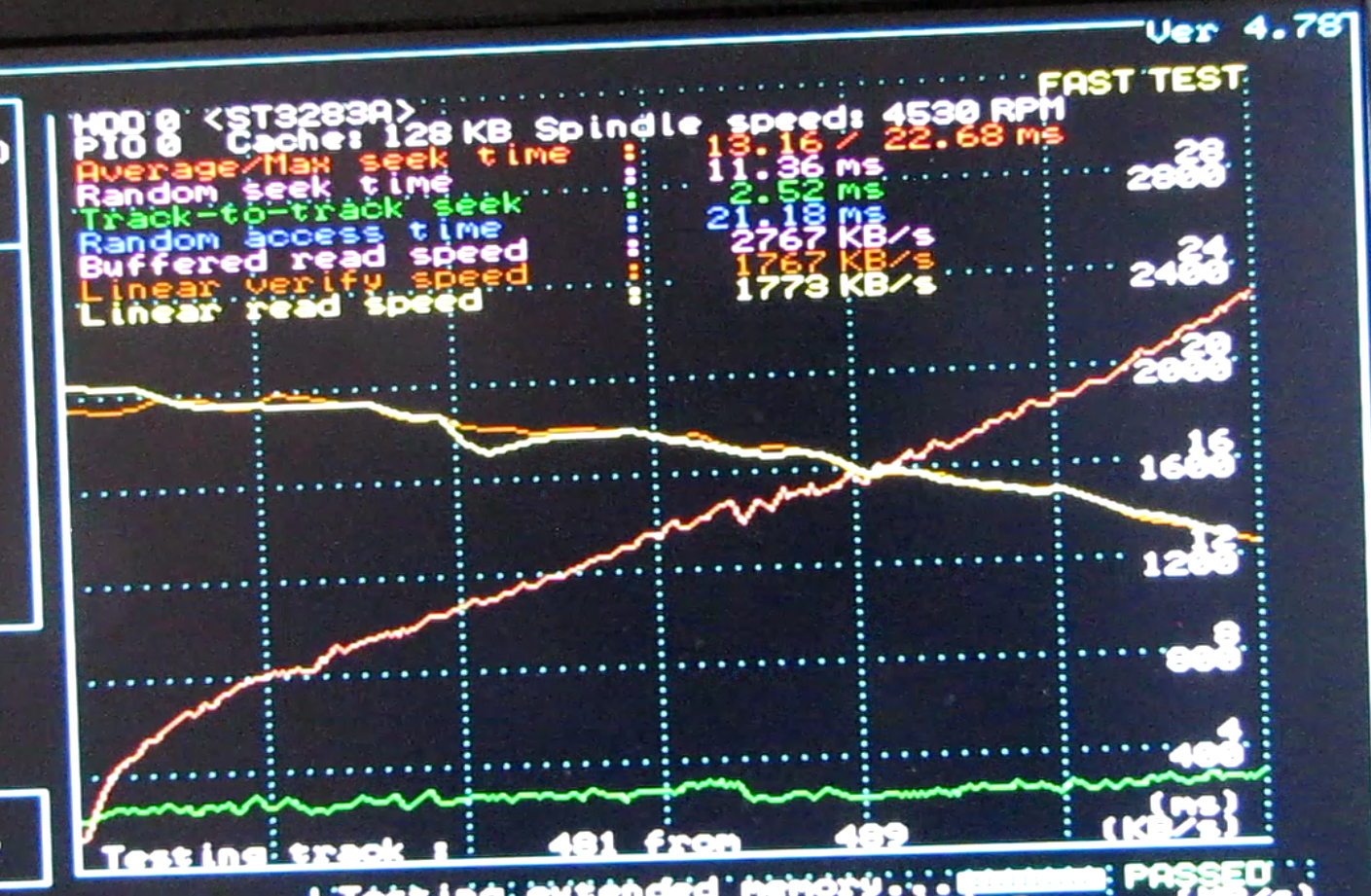
This drive is fortunately in great health, aside from one slow sector. I used MHDD2.9 for this process, alongside Spinrite for sector verification. It’ll now be put into my newly-acquired IBM PS/V Model 2410.
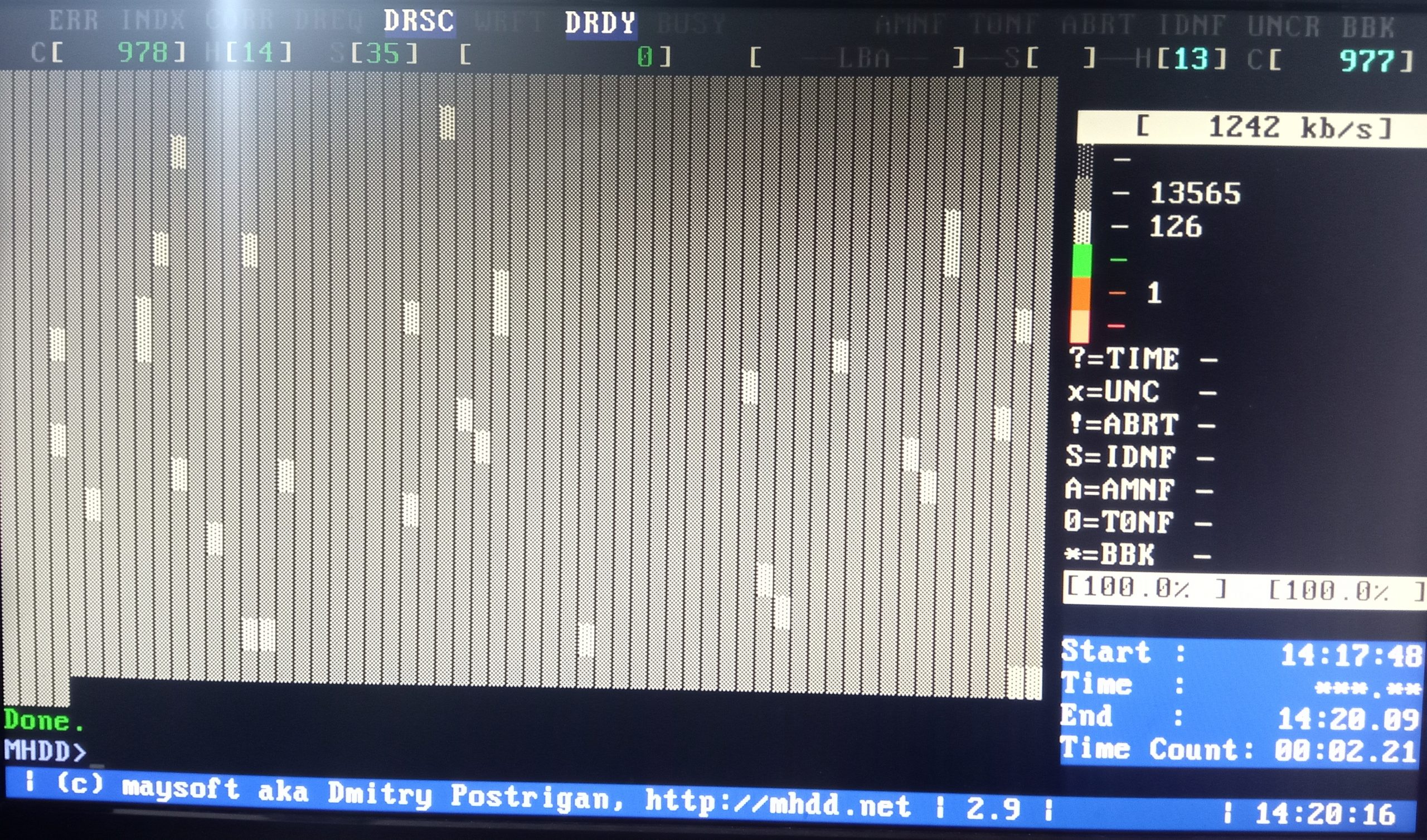
If you missed the video I made on this drive, you can find it here: